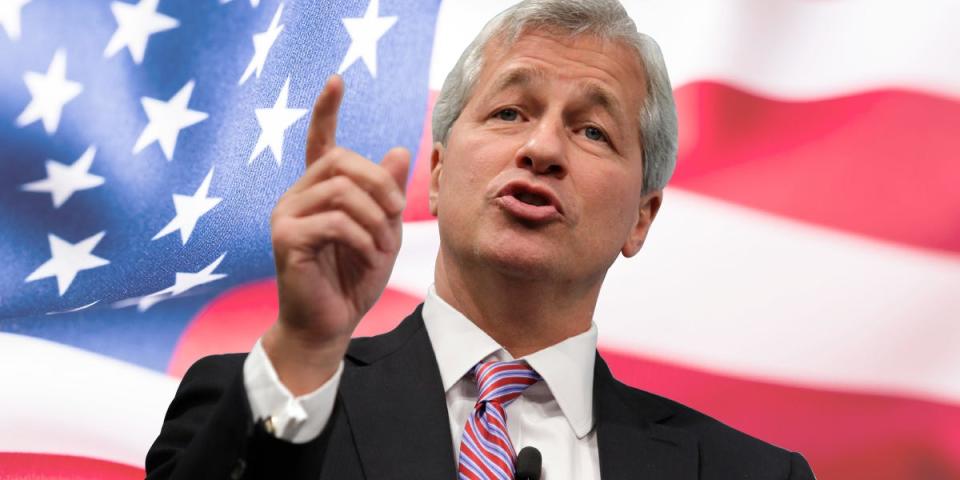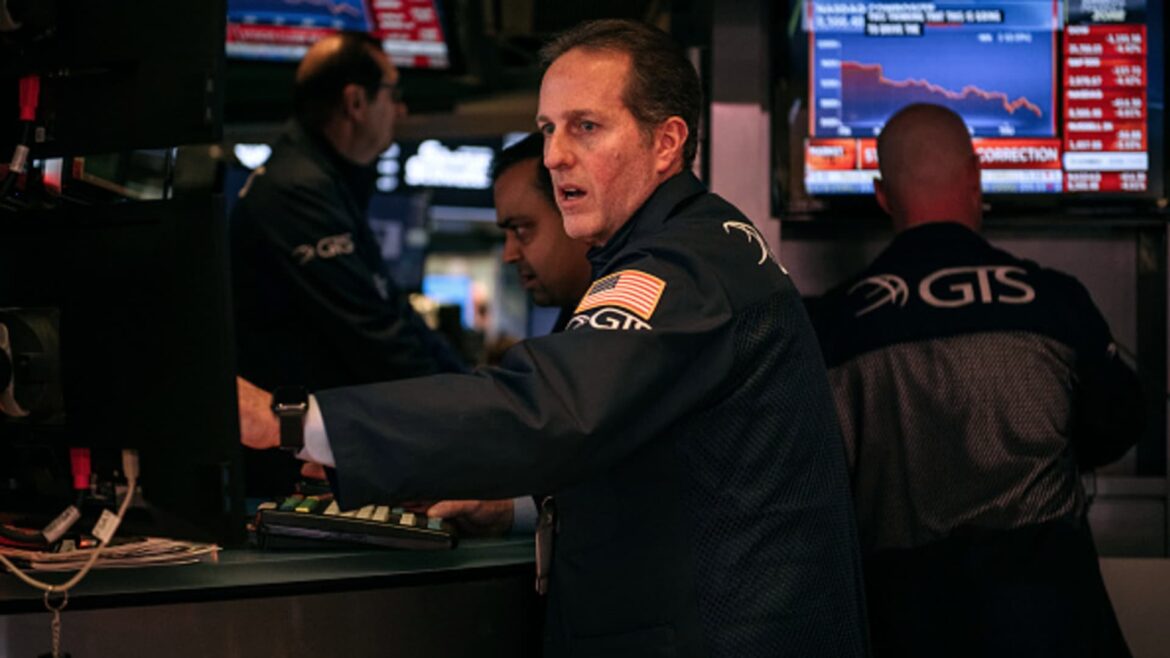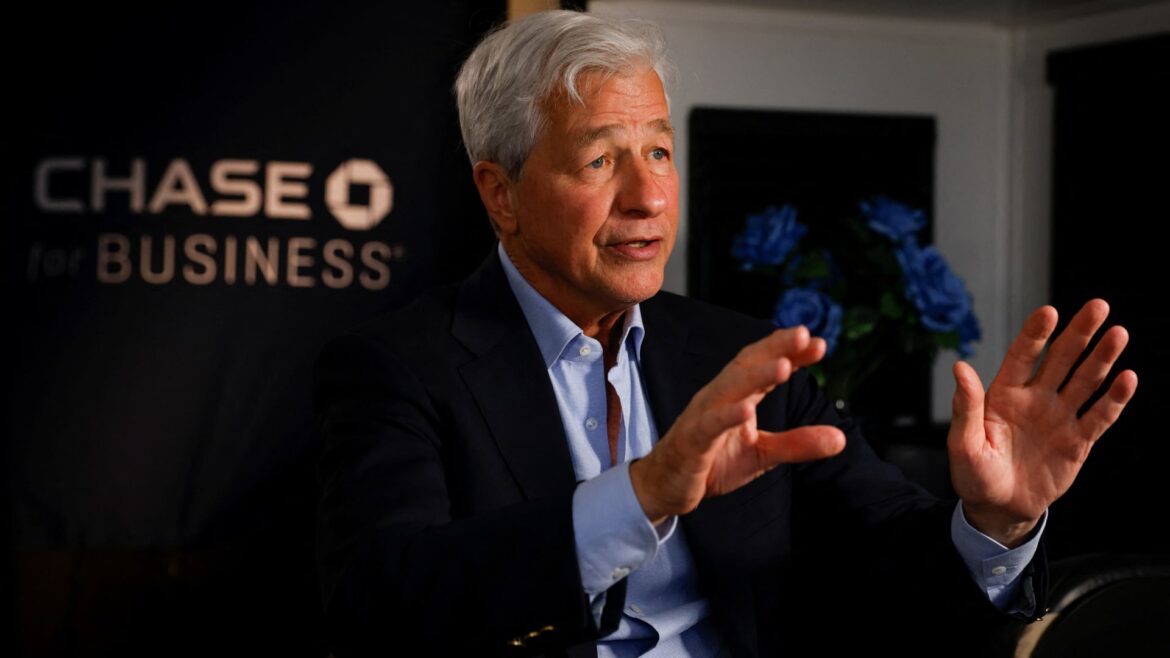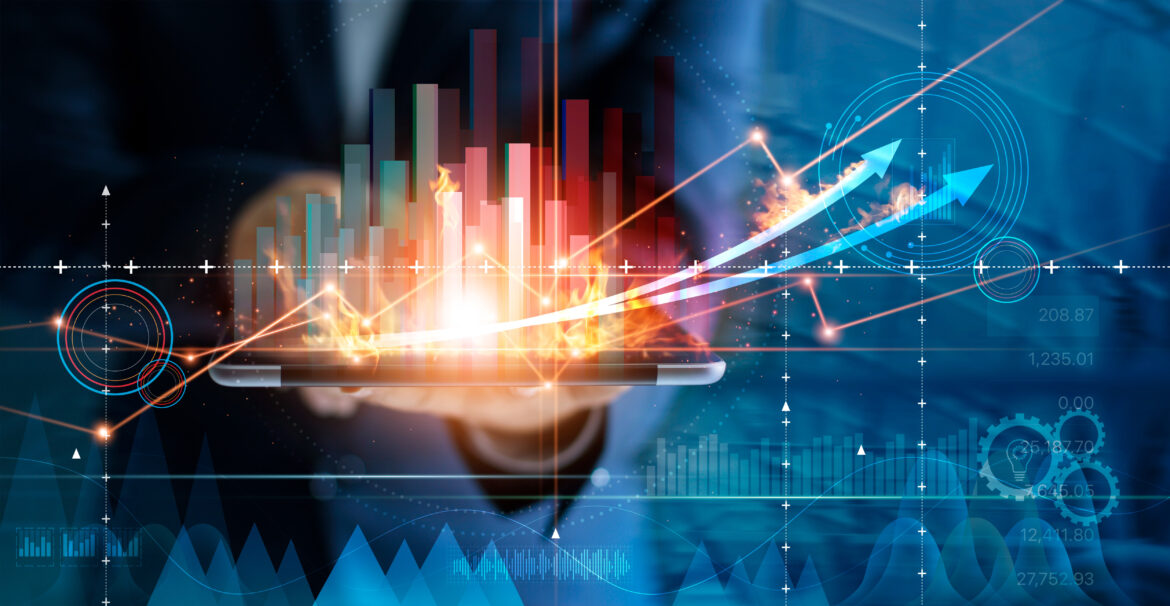
If home sellers stop paying real-estate agents’ commissions, buyers may end up footing the bill.
Source link
dangerous
Here’s Why It’s Dangerous To Tap Your Retirement Account Early — Even if You Don’t Incur a Penalty
Savers who put money into traditional IRAs and 401(k)s get a nice tax break. Contributions up to an annual limit exempt some of your earnings from taxes, so if you fund one of these accounts, you get to not only set money aside for retirement, but pay the IRS a little less.
But because your contributions to a traditional IRA or 401(k) plan go in on a pre-tax basis, the IRS wants you to leave your money alone long enough for it to serve as income for retirement. As such, there’s a 10% early withdrawal penalty that generally applies to distributions from these accounts taken prior to age 59 1/2.
Now there are a few exceptions. IRAs, for example, allow you to withdraw up to $10,000 to purchase a first-time home. You can also tap an IRA early to pay for higher education.

Image source: Getty Images.
But even if you’re able to take an IRA or 401(k) withdrawal without incurring a penalty, doing so prior to actual retirement could hurt you in a very big way. Here’s why.
It’s a matter of lost investment gains
Clearly, a 10% early withdrawal penalty has the potential to cause you financial harm. But even if you’re able to avoid that penalty, raiding your IRA or 401(k) might harm you financially in another way.
The money in your IRA or 401(k) shouldn’t just sit in cash. Ideally, you’re investing that money so your balance grows nicely over time. As such, any dollar you remove from an IRA or 401(k) early is money you can’t keep investing. And the consequences there could be huge.
Let’s say you take a $10,000 withdrawal from your IRA at age 35 to purchase a home. But let’s also assume you then don’t retire until age 70. Furthermore, let’s assume that your IRA portfolio delivers an average annual return of 8%, which is a bit below the stock market’s average.
By missing out on the opportunity to earn 8% on your $10,000 withdrawal over 35 years, you’re losing out on almost $148,000 of retirement income. That could potentially constitute a few years’ worth of bills for your senior self, depending on what your costs turn out to be.
Be careful even when taking a withdrawal after age 59 1/2
Once you turn 59 1/2, you can remove funds from your IRA or 401(k) without having to worry about a penalty. But even then, it’s important to be careful.
Let’s say you’re thinking of removing $20,000 from your 401(k) to renovate your home at age 60. That money is yours free and clear of penalties. But let’s also assume you’re not retiring until age 68, and that your portfolio delivers a yearly return of 6% in your 60s (since, by then, it’s good to shift to more conservative investments).
Losing out on a 6% return on $20,000 over eight years means missing out on about $32,000 in retirement income. That’s still a notable sum. It could, for example, end up being money you need to pay for healthcare down the line.
The fact that the IRS imposes early withdrawal penalties on IRAs and 401(k)s is actually sort of a good thing, since it may be the factor that helps you stay disciplined and avoid tapping your savings prematurely. But even if you’re able to avoid a penalty, it still pays to try not to take a withdrawal from your IRA or 401(k) until you’re actually retired and absolutely need that money.
JPMorgan boss Jamie Dimon says the US is addicted to debt, and it’s created a dangerous sugar high in the economy

-
America’s debt problem has caused a dangerous sugar high for the economy, Jamie Dimon said.
-
The JPMorgan chief pointed to the enormous surge of new debt taken on during the pandemic.
-
That money propped up the economy, but was like “heroin” in the hands of consumers, he said.
The US is practically addicted to debt – and that’s put the economy in a dangerous position, according to JPMorgan CEO Jamie Dimon.
The Wall Street banking chief pointed to the enormous amount of debt the US has taken out since the pandemic, including around a trillion distributed in stimulus checks and the $4 trillion doled out by the Federal Reserve to buy government bonds. Those actions injected a huge amount of cash into US markets, leading firms to rake in more profits while stocks soared higher in 2021.
“That money is like heroin,” Dimon said at the Global Investment Summit in London, per the Telegraph.
After the debt-fueled stimulus came inflation, which prompted the Fed to apply the brakes on ultra-loose monetary policy. That’s threatening to put markets in a state of withdrawal, Dimon suggested, with stocks struggling in 2022 and markets seeing big bouts of rate-fueled volatility throughout 2023.
Inflation in the US is also likely remain elevated, he added, partly due to high levels of government spending. The US’s total debt pile hit a record $33 trillion for the first time this year, and it’s edging closer to $34 trillion as lawmakers spar over the federal budget.
“We’re on this sugar high and I’m not saying this ends in a depression [but] I think there’s more inflationary forces out there,” Dimon warned. “There’s a higher chance that rates go higher, inflation doesn’t go away, and all these things cause more problems of some sort.”
Economists have warned of a potential crisis emerging from the US’s debt problem over the coming decades. If the US doesn’t change course, it could potentially default on its debt in 20 years, the Penn Wharton Budget Model predicted, which could end up having catastrophic consequences on the US economy.
The rest of the global economy is also staring at a “cocktail” of risks, Dimon added. Previously, he said the world was facing “most dangerous time the world has seen in decades,” citing wars, growing debt levels, and restrictive monetary policy from central banks.
Read the original article on Business Insider
Global bond rout looks ‘tremendously dangerous’ for stocks, hedge fund manager warns
An intensifying bond rout is piling pressure on the global economy and creating a “tremendously dangerous” outlook for equities, the chief investment officer of Livermore Partners hedge fund said Friday.
A new era of higher interest rates has caused bond yields to surge, hampering returns for investors and flipping on its head the status quo of the past decade-and-a-half, David Neuhauser told CNBC. Bond yields move inversely to prices.
Asked how worrying that landscape was for equities, he said: “I think it’s tremendously dangerous at this point.”
“We’re in this world of risk where, for almost 15 years, you had a bond market that was in a bull market, and you had rates negative for several years,” Neuhauser told “Squawk Box Europe.”
“That dynamic fed throughout the global economy, where housing prices were affordable, autos were affordable, and people were subjected to an environment and a lifestyle which had much lower interest rates.”

That environment has shifted as central banks have pushed ahead with rate hikes to tackle higher inflation. That, in turn, has pushed bond yields higher and sapped money from government budgets by raising borrowing costs.
In the U.S. Treasury market — a crucial component of the global financial system — bond yields have surged to highs not seen since the onset of the global financial crisis. In Germany, Europe’s largest economy, yields have hit their highest level since the 2011 euro zone debt crisis. And in Japan, where interest rates are still below 0%, yields have risen to 2013 highs.
“I think that is going to cause a lot of pain moving forward in terms of the economy,” Neuhauser said.
Bond bears ‘back from the dead’
Those fiscal imbalances are giving “a lot of ammunition to the bond bears,” the hedge fund manager added, with interest rates likely to remain higher for longer.
“What you’re seeing now with the bond market is, you know, bond vigilantes are back in vogue, back from the 80s, back from the dead, and I think they’re leading the market today,” Neuhauser said.
Neuhauser’s statement echoes similar comments earlier this week from UBS Asset Management’s head of global sovereign and currency, Kevin Zhao, who said “the bond vigilante is coming back.”
NEW YORK, NY – FEBRUARY 27: Traders work on the floor of the New York Stock Exchange on February 27, 2020 in New York City. With concerns growing about how the coronavirus might affect the economy, stocks fell for the fourth straight day. The Dow Jones Industrial Average lost almost 1200 points on Thursday. (Photo by Scott Heins/Getty Images)
Scott Heins | Getty Images News | Getty Images
Central banks have been keen to stress that interest rates are unlikely to start falling any time soon. The European Central Bank reiterated the point Thursday, holding rates steady at a record high of 4%, while the U.S. Federal Reserve is expected to hold at 5.25%-5.50% next week.
Neuhauser said these higher rates will weigh heavily on consumers and corporates.
“I think that’s going to cause a lot of pressure on the credit markets, it’s going to cause a lot of pressure on the consumer going forward,” he said.
Corporates, too, are set to come under pressure from high debt and refinancing costs, Neuhauser said.
“Ultimately that will lead to the downtrend of the economy and also it’s going to hurt the stock market and you’re starting to see that today,” he added.
With the Israel-Hamas conflict building day by day, and the war in Ukraine raging on, JPMorgan Chase CEO Jamie Dimon came out with a powerful warning on Friday.
“The war in Ukraine compounded by last week’s attacks on Israel may have far-reaching impacts on energy and food markets, global trade, and geopolitical relationships. This may be the most dangerous time the world has seen in decades,” he said in a statement accompanying JPMorgan’s third quarter earnings report.
To his point, experts have warned that the Israel-Hamas conflict could send oil prices surging, particularly if Iran or other major oil suppliers get involved. And Deutsche Bank said earlier this week that the conflict has raised the prospect of 1970’s-style stagflation—a toxic combination of low growth and high inflation. So far, international benchmark Brent crude oil prices have jumped 6% over the past week to nearly $90 per barrel.
Dimon has repeatedly warned over the past 18 months that the global economy is facing “storm clouds”—from rising interest rates and inflation to geopolitical tensions and a costly energy transition—but he’s always refrained from making specific recession predictions. And once again on Friday, he avoided issuing any dire recession forecasts.
Dimon wasn’t shy about expressing concerns about the economy, however. The CEO said that although consumers remain “healthy” for now, they are quickly spending down the excess savings they built up during the pandemic. And he argued that “persistently tight labor markets” coupled with “the largest peacetime fiscal deficits ever,” have increased the risk of persistent inflation and higher interest rates.
Still, despite the threats on the horizon, Dimon noted in JPMorgan’s earnings call that his bank managed “robust” loan growth and that consumer spending is back to its pre-pandemic trend for now.
CFO Jeremy Barnum added there are also some “green shoots” in the economy that give him hope, even though the bank’s economists expect a “very mild recession” and despite a number of economic headwinds.
“The overall economic picture, at least currently, looks solid. This sort of immaculate disinflation trade is actually happening,” Barnum told analysts in the Friday conference call. “So those are all reasons to be a little bit optimistic in the near term, but it’s tempered with quite a bit of caution.”
Even amid economic storm clouds, JPMorgan managed to increase its revenue 22% year over year to $39.9 billion in the third quarter, while its net income jumped 35% to $13.2 billion. Both figures topped Wall Street analysts’ consensus estimates as the bank benefited from rising interest rates and its acquisition of First Republic’s assets—a regional bank that the Federal Deposit Insurance Corporation seized in April after it went under.
Despite paying out only 2.53% on average for interest-bearing deposits, JPMorgan has been able to hold on to its depositors during these uncertain times for the U.S. economy because many consumers view the bank’s size as a sign of safety. At the same time, rising interest rates have enabled Dimon’s firm to significantly increase what it earns from its loan portfolio. JPMorgan’s net interest income (NII)—the bank’s earnings from loans minus what it pays depositors—jumped 30% to $22.73 billion in the third quarter as a result.
Other major U.S. banks, including Wells Fargo and Citi, also turned in strong results Friday as rising interest rates drove increases in their NII.
Wells Fargo stock surged more than 3% by midday Friday after its NII rose 8.3% from a year ago to $13.1 billion in the third quarter, and management raised its full-year 2023 NII forecast. They now believe the all-important figure will climb 16% from a year ago in 2023, compared with a previous estimate of 14%.
Citi stock also jumped over 2.5% by midday Friday after the bank reported its revenue climbed 9% to $20.1 billion in the third quarter. The jump was driven by 17% growth in net interest income amid “higher interest rates and deposit volume growth,” along with rising investment banking fees and trading unit revenues, the bank said in a statement.
This story was originally featured on Fortune.com
JPMorgan Chase CEO Jamie Dimon warns this is ‘the most dangerous time’ for the world in decades
Jamie Dimon, Chairman of the Board and Chief Executive Officer of JPMorgan Chase & Co., gestures as he speaks during an interview with Reuters in Miami, Florida, U.S., February 8, 2023.
Marco Bello | Reuters

Beyond the military conflicts, Dimon cited the burgeoning national debt and “the largest peacetime fiscal deficits ever” that he said are raising the risks that inflation and interest rates remain high.
Along with the high rates, he mentioned the Federal Reserve’s efforts to reduce its bond holdings. The process, known as quantitative tightening, “reduces liquidity in the system at a time when market-making capabilities are increasingly limited by regulations,” he said.
Dimon recently has said that he has been warning clients about the possibility that interest rates may not only stay elevated but also could rise significantly from here.
“While we hope for the best, we prepare the Firm for a broad range of outcomes so we can consistently deliver for clients no matter the environment,” he said.
JPMorgan Chase showed a $13.15 billion, or $4.33 a share, profit for the July-through-September period, a 35% jump from a year ago. Dimon further cautioned that the performance came from benefits to net interest income and credit costs that likely won’t last.
Don’t miss these stories:
1 Rebounding Software Stock Could Be Great, the Other a Dangerous Value Trap. Which Is Worth Buying?

The Unfortunate Truth About Maxing Out Your 401(k)

Want the Max $4,555 Social Security Benefit Check? Here’s the Salary You Need.

2 Stocks to Buy in an Unstoppable Industry

Warren Buffett Is Selling Shares of This High-Yield Dividend Stock and, Likely, Buying Shares of His Favorite Stock (No, Not Apple!)
Razor blades, guns and rage: Dealing with the public gets dangerous for workers
Serafino Lopez is the man Brooklyn residents see on their doorstep after the power goes out.
The Con Edison lead mechanic in subsurface construction has to employ his technical skills to detect electrical problems, and get the lights back on.
Ever since the pandemic, Lopez increasingly needs to resort to his other tool box. That’s defusing customer anxiety and aggression — especially if he’s following up after another crew team couldn’t fix the problem, or if he needs to tow a car down the block to access a manhole.

“I’ve seen a shift in peoples’ thoughts, people’s actions,” said Serafino Lopez, a Con Edison lead mechanic.
Courtesy Serafino Lopez
“I’ve seen a shift in people’s thoughts, people’s actions,” said Lopez. “You could see people are more high strung, a little bit more angry and frustrated, a little bit more nervous. I try to be as understanding as possible and just kind of relate to their problem. I try to ensure them the issues are going to be resolved because I’m here.”
Still, Lopez and his crew get harangued by passersby about the cost of utility bills and interrogated about disconnects. More people disregard traffic cones and drive through his worksites. Around a year ago, some guys threatened him with razor blades, Lopez said.
“I haven’t seen it wild like this for a long time,” said the 38-year-old, who was born and raised in Brooklyn.
Face-to-face customer interactions have gotten tougher. Just ask flight attendants. COVID-19 heightened these confrontations, with worker-customer altercations over masks or people checking vaccine cards at the front door. But while the pandemic fades, the greater chance for customer rudeness — or worse — remains, say frontline workers and experts.
Lopez is far from the only public-facing worker who walks the streets to notice a change in how strangers treat him on the job. Last week, the Internal Revenue Service said its revenue officers would stop making most surprise visits to taxpayers’ homes to ask questions about unpaid taxes or unfiled tax returns.
The decades-long tax collection tactic was curbed in part to undercut scammers who pose as the taxman, IRS Commissioner Danny Werfel said. But it was also a precaution for IRS staffers who had become more apprehensive about the trips, he added.
“‘Knocking on someone’s door today is a different scenario than it was 10 or 15 years ago.’”
— RS Commissioner Danny Werfel
“I don’t know that that’s unique or specific to the IRS, but knocking on someone’s door today is a different scenario than it was 10 or 15 years ago,” Werfel told reporters. “There have been significant reports from IRS employees of home visits where they have felt unsafe.”
Doreen Greenwald occasionally experienced some uneasy moments during the nearly two decades she worked as an IRS revenue officer, sometimes visiting homes and businesses.
Conversations on a porch or an invitation inside were common, said Greenwald, who worked at the IRS for 35 years total and is now national executive vice president of the National Treasury Employees Union.
“Over the years though, there was more and more scrutiny, where people would say ‘I don’t know why you would be here,’ ‘I don’t believe you are who you say you are.’”
She’s heard stories of IRS colleagues being chased off properties with dogs on the loose, guns that were brandished or shot in the air “and things of that nature to let you know that your presence is not welcome.” There were times when Greenwald was threatened on the phone and to her face, she said.
While IRS workers are largely ending their unannounced trips, the livelihoods of people like Jillina Kwiatkowski, a process server, depend on surprise in-person visits — and they’re becoming more fraught.
Her job requires her to formally deliver freshly-filed lawsuits for outstanding credit-card debts, foreclosures, landlord-tenant disputes, personal injuries, divorces, child custody and more.

“You don’t know what you are going to find on the other side of the door that you are knocking on,” said Jillina Kwiatkowski, owner of Smart Serve Process Serving.
Courtesy Jillina Kwiatkowski
“After 23 years, it still can be a little bit nerve-racking. You don’t know what you are going to find on the other side of the door that you are knocking on. You always have to keep your guard up,” said Kwiatkowski, owner of Smart Serve Process Serving in the suburbs of Buffalo, N.Y. and first vice president of the National Association of Professional Process Servers.
Kwiatkowski has honed her approach. She stays calm and her demeanor is “very apologetic.” Kwiatkowski always backs into dead-end driveways if she needs to exit quickly and she never fills out paperwork in her car after service, in case the recipient decides to vent.
There’s never a great time for people to learn they’re getting sued, Kwiatkowski said. But background stressors make it more difficult to be the bearer of bad news. Doing her job after 9/11 was tough. Certainly during COVID-19 and with inflation, “definitely tempers rise.”
“It probably has gotten worse. As the economy has changed over the years, people’s attitudes have changed over the years,” Kwiatkowski said. “I’ve never had a huge amount of problems. Have I heard of any uptick in problems with process servers? Yes.”
Still, Kwiatkowski has been pushed from porches, brought to tears by an off-duty police officer and once pecked by a turkey. “The thing chased me, and they run fast. And they hurt.”
Help wanted, conflict-resolution skills needed
“Incivility has risen dramatically over the last couple decades. But really over the last few years, it’s skyrocketed,” said Christine Porath, a UNC Kenan-Flagler Business School professor who studies the toll of incivility on companies and their employees, and works with companies that are dealing with it in their ranks and among customers.
When Porath polled workers across the world in 25 industries last year, 78% said they experienced incivility at work at least once a month. Also, 78% believed bad customer behavior directed at workers was less common five years ago.
She mainly links people lashing out to increased stress, negativity and uncertainty in the aftermath of the COVID-19 pandemic.
The prospect intensifies with home visits where people have a stranger on their turf, and are on guard for fraudsters. Fraying community connections and fading confidence in institutions like government, courts and big business also reduce trust, she said.
Nastiness is always a problem because it can be “contagious,” Porath said. But its continuing rise is especially worrying when so much of the economy revolves around service for customers, clients, patients and the public, she noted.
During the so-called great resignation — the dash for better employment while the economy bounced back from COVID-19 — Porath said she “heard a lot of people transitioning from frontline job to back-office work” in order to spare themselves the customer-facing agitation.
As technology and automation keep changing the nature of work, people who know how to deal with tense customers and heated emotions will have one very appealing skill set for the future, Porath said.
When she exited a Costco
COST,
the other day, a worker’s warm “thank you” stuck with her.
“If organizations knew that matters to people, the human touch, the human element, I think that we would see that valued. …If you can provide the situations where people feel that more deeply, I think that’s fantastic. You’re going to increase the chance of customer loyalty dramatically.”
‘It gets tough at times’
A store greeting is different from a door knock to access a home’s basement or to serve a lawsuit.
Lopez loves his job. “I provide a service to the public and I have a team of brothers that are behind me.”
Lopez, a shop steward and member of the Utility Workers Union of America, AFL-CIO, credits ConEd for offering the needed equipment and support. But the chance for difficult interactions is a grind, he said. “It gets tough at times to always deal with this on a daily basis,” Lopez told MarketWatch.
“Unfortunately, we have seen an increase in threats and crimes against our workers in the last several years. Those with thoughts of assaulting a Con Edison worker need to know it is a felony and can result in a prison sentence. Our policy is zero-tolerance of this behavior,” said ConEd spokesman Allan Drury.
It’s also a felony in New York State to assault a process server, Kwiatkowski noted. While president of the state affiliate of the national process-server organization, she lobbied legislators to bump the crime from a misdemeanor to felony in 2016.
Kwiatkowski says process servers offer the constitutionally vital first steps of legal access and due process so people tell their side of the story in a court of law.
“Until they can guarantee that the person you are trying to serve can receive a paper electronically — and there is no way that they can guarantee that right now — we are going to be going knocking on people’s doors,” Kwiatkowski said. “Sometimes it’s a scary job, but we take pride in it.
Lopez also knows his work is vital for the community. “There’s no one on this planet that can work faster in an emergency than us,” he said.
Want to fight your office’s return-to-work mandate? The law isn’t on your side and why wildfire smoke is so dangerous for the lungs
Hi, MarketWatchers. Don’t miss these top stories.
What Google, Martha Stewart, Amazon and others have gotten so wrong about the remote-work debate
How did a ‘perk’ for office workers and pandemic-era safety measure turn into an company-employee standoff? Read More
‘We need an equity approach to the climate crisis’: When air quality declines, low-income people and communities of color suffer most
Communities of color have long faced the negative effects of air pollution, including more severe asthma symptoms. Read More
Want to fight your office’s return-to-work mandate? The law isn’t on your side.
‘With few exceptions, the employer has every right to call people back to the office,’ one attorney told MarketWatch. Read More
Here’s one way women can feel more empowered when thinking about their finances
Also: How a young executive is transforming an already good restaurant chain, an investment bootcamp and different approaches to dividend stocks. Read More
The hand-built 2023 Mercedes-Benz G-Class is both tough and luxurious, with military-grade off-road talents
What Mercedes-Benz probably didn’t plan all those decades ago, when it first created what is now the G-Class, was how cool this vehicle has become. Read More
‘Like unfiltered cigarettes’: Why is wildfire smoke so dangerous for the lungs?
‘Wildfire smoke is 10 times more harmful to children’s respiratory health than other types of air pollution,’ says Dr. Lisa Patel. Read More
Air conditioners help with wildfire smoke, right? Not necessarily. Here’s why.
A common myth is that air conditioners — specifically in-window units — bring outdoor air inside. Read More
I grew up with hazardous smoke from forest fires in Asia. Here’s what I learned.
Don’t vacuum. Drink water. Keep your kids inside. Read More









